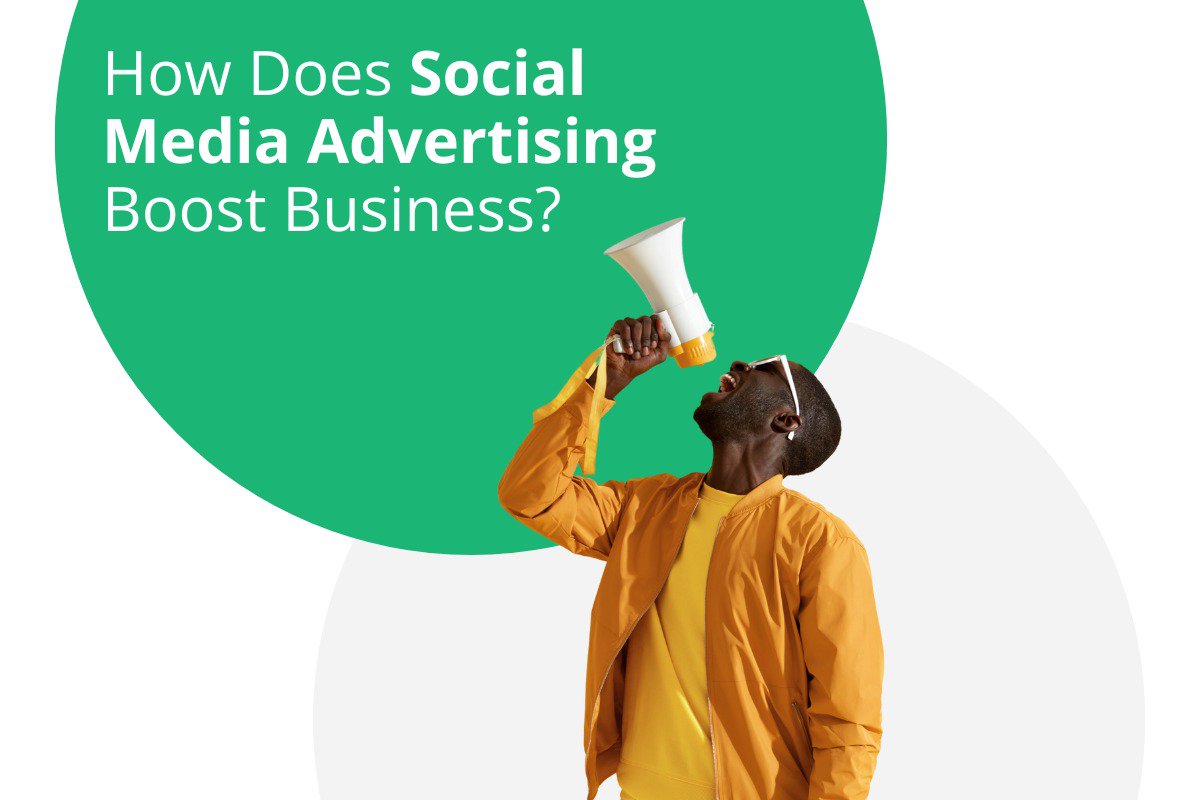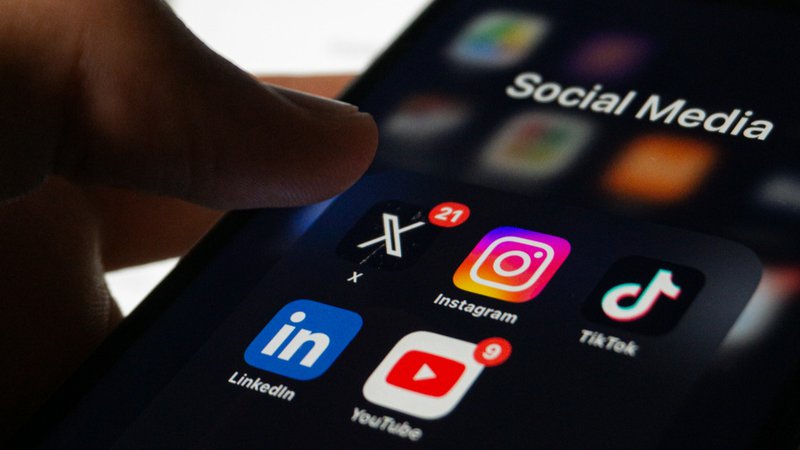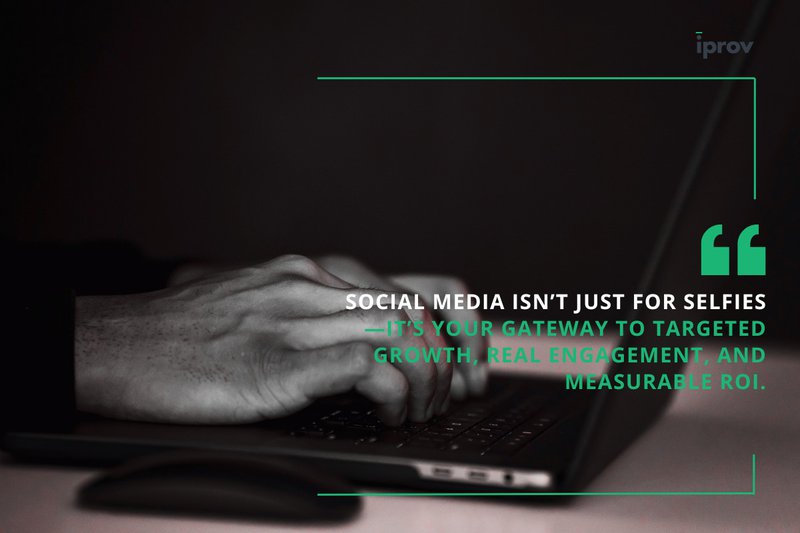
Social media isn’t just a place for selfies and hashtags—it’s a powerful tool for business growth. If you’re curious about how social media advertising can help healthcare, tech, or professional services businesses thrive, this guide is for you. Here, we'll break down how social ads operate, how they help businesses grow, and why they’re effective in generating leads, engagement, and ROI.
Key Takeaways:
- What is Social Media Advertising? It involves using platforms like Facebook, Instagram, and TikTok to display targeted ads to specific audiences, boosting brand awareness and driving sales.
- How Does Targeting Work? Platforms utilize user data (e.g., demographics, interests) to deliver ads to relevant users, ensuring cost efficiency.
- How Do Ad Auctions Work? Platforms determine ad placement based on factors like bid amounts, ad quality, and user relevance.
- Ad Costs: Facebook CPC ranges from $0.50 to $3.50, LinkedIn CPM costs $2 to $6, while TikTok and Instagram emphasize video creativity.
- Top Trends for 2024: Growth in shoppable posts, privacy-focused advertising, and AI-driven campaign optimization.
- Emerging Platforms: TikTok leads short-form video content, Discord enables community-based marketing, and metaverse platforms offer immersive branding opportunities.

The Function of Social Media Advertising Work
Social media advertising allows businesses to connect with ideal customers online. It involves using platforms like Facebook, Instagram, and LinkedIn to show ads tailored to specific audiences. When done effectively, it serves as a cost-efficient way to enhance brand visibility, drive sales, and build closer relationships.
Social Media Ads
Social media ads consist of two main components: engaging content and strategic targeting. Content includes formats like images, videos, carousels, or interactive features such as polls and quizzes. These visuals grab attention and encourage interaction while seamlessly blending into users’ feeds.
What sets social ads apart is their targeting capability. Platforms use algorithms to help businesses reach people based on demographics, interests, and behaviors. For example, Facebook lets advertisers focus campaigns on users’ age, location, or shopping habits. This precision ensures businesses invest every advertising dollar effectively.
Ad Auctions on Popular Platforms
Every ad you see on social media is likely there because it won a virtual auction. Platforms like Facebook, Instagram, and TikTok use auctions to decide which ads are shown. Here’s how this works: advertisers set a goal (e.g., clicks or impressions) and a maximum budget. The platform’s algorithm then evaluates factors like the advertiser’s bid, the ad’s quality, and its relevance to users.
For example, if two companies target the same audience on Facebook, the one with more compelling content and a stronger bid will typically win. On TikTok, creative and entertaining ads typically shine, reflecting the platform’s focus on engaging, short-form content.
By understanding this process, advertisers can create strategies that get results. Even businesses with smaller budgets can compete by producing high-quality, relevant ads.
Targeting in Paid Social Campaigns
Effective targeting ensures ads are shown to audiences who are likely to respond positively. Platforms use vast sets of user data—such as interests, location, and browsing habits—to help businesses narrow their focus.
For instance, consider a fitness brand on Instagram. Instead of broadcasting its ads to everyone, the business could aim them at users who follow fitness influencers or regularly shop for workout equipment. This not only saves money but also delivers better results.
Targeting also supports personalization, allowing businesses to tailor ads for specific audiences. For instance, new customers might see introductory offers, while loyal customers might receive discount codes. These strategies build stronger connections and make ads feel more relevant to consumers.
In essence, social media advertising succeeds through its combination of creativity, data, and strategy. It continues to evolve, offering businesses exciting opportunities to engage audiences and refine campaigns further.
The Benefits of Social Media Ads
Social media advertising offers unparalleled benefits for businesses. Its ability to connect with specific audiences, improve customer engagement, and provide measurable results has transformed marketing.
Improving ROI
Target the right audience and keep costs low to unlock a strong return on investment (ROI) with social media ads. Optimize campaigns to hit specific goals, like driving purchases or boosting website visits. Platforms like Facebook let you track results in real-time, so you can quickly pause underperforming ads and shift funds to maximize impact.
Additionally, detailed tracking tools identify which campaigns generate the most conversions—whether from direct purchases or leads. This ensures money is spent only on what works.
Precision Targeting
Precision targeting enables businesses to reach their most relevant customers and reduce unnecessary spending. Platforms like Instagram empower businesses to define audience parameters based on factors such as shopping preferences or life-stage events.
A small fitness apparel company, for example, could connect with users already browsing for athletic wear rather than a general audience. Whether it’s a multinational brand or a local boutique, targeting helps businesses use resources wisely.
Engage Customers
Social ads inspire interaction by incorporating elements like clickable links, videos, or quick surveys. TikTok, for example, excels at creating ads that feel organic, which improves user engagement. Ads like these are not only entertaining but also shareable, amplifying their reach.
Interactive campaigns also create a sense of connection. A good ad isn't solely about making a sale—it tells a story, answers questions, or encourages users to share their experiences. This builds trust and strengthens relationships between brands and their customers.
For tips on maximizing engagement, check out this guide to Facebook Advertising.

The Cost of Social Media Advertising
Influences on the Cost of Ads
Several factors shape the cost of social media ads. One major factor is audience size and interest level. For example, targeting niche groups may cost more because fewer users fit the criteria. The format also matters; video ads tend to cost more but often deliver higher engagement.
Timing is crucial too. Running ads during high-demand periods, like holidays, increases competition and prices. Finally, your bidding strategy dictates how much control you’ll have over your ad’s exposure.
Costs Across Platforms
Advertising costs differ greatly by platform:
- Facebook: Average Cost-Per-Click (CPC) ranges from $0.50 to $5.50.
- LinkedIn: Average Cost-Per-Thousand Impressions (CPM) costs $2 to $6, benefiting B2B-focused campaigns.
- Instagram: CPC averages $0.70 to $1.00 and works best for lifestyle and visual brands.
- TikTok: Known for flexible budgets but favors short, creative content.
*Note that averages are subject to change based on many factors, including time of year, desired audience reach, and more.
Strategies to Maximize Ad Spending
Making the most of an advertising budget depends on smart planning. Start by defining clear, measurable goals. Whether aiming to increase brand awareness or drive website traffic, having focused objectives ensures money is allocated effectively.
Next, target the right audience using platforms’ demographic tools. Avoid showing ads to overly broad or uninterested groups. Testing is another key step: experimenting with different ad versions lets you discover what performs best.
Best Practices
Crafting successful social media ads requires creativity that grabs attention. Bold visuals, simple messages, and actionable prompts resonate best. Ads need to feel personal, almost like a direct conversation.
Choosing the right format depends on your goals. Carousel ads work well for showcasing products, while video ads are ideal for storytelling. Platforms like TikTok thrive on short videos, while Instagram Stories offer authenticity.
Always track your campaign’s performance using metrics like clicks and conversions. If results fall short, adjust content, visuals, or targeting. Experimentation is key to finding the most effective approach.
Top Platforms for Social Media Advertising
Popular platforms include:
- Facebook: 2.96 billion monthly users.
- Instagram: 2 billion users with a younger demographic.
- TikTok: Over 1 billion users engaging with short videos.
- LinkedIn: 930 million professionals ideal for B2B marketing.
Each suits different styles and strategies based on audience behavior.
Barriers to Success
Challenges include algorithm changes, platform competition, and incorrect targeting. Continuously adapting and refining strategies is necessary to achieve success.
Avoiding Ad Fatigue
Rotate new content regularly to keep campaigns fresh and engaging. Use A/B testing to identify what resonates most with users.
Future Trends in Social Media Advertising
Prepare for more personalized, privacy-focused campaigns. Shoppable posts are also taking off, and AI advancements are making ads smarter and more efficient. Drive success in social media advertising by staying creative, leveraging analytics, and adapting quickly.
Supercharge Your Business with Social Media Advertising
Are you looking to take your business to new heights with social media advertising? By learning how to create impactful campaigns, you can effectively build your brand, engage your audience, and ultimately drive real results. Furthermore, with iProv’s proven strategies, you’ll be able to maximize your ad spend while achieving measurable growth. So, don’t wait—download our free Social Media Marketing eBook today to start boosting your business through smarter social media advertising!
